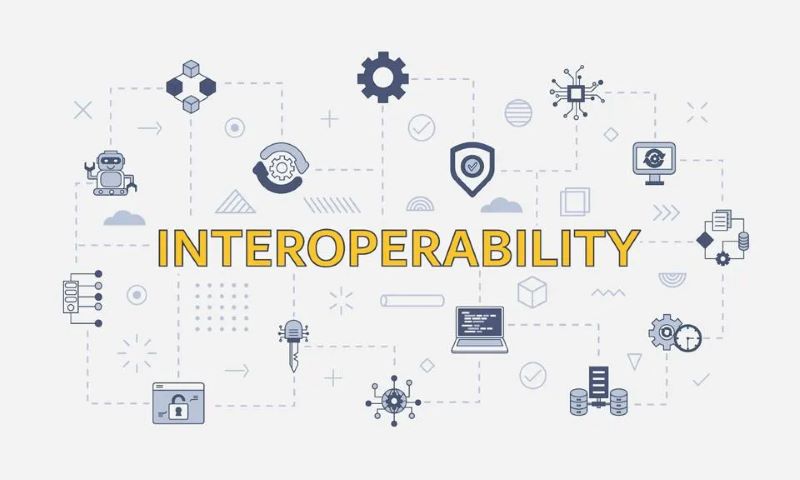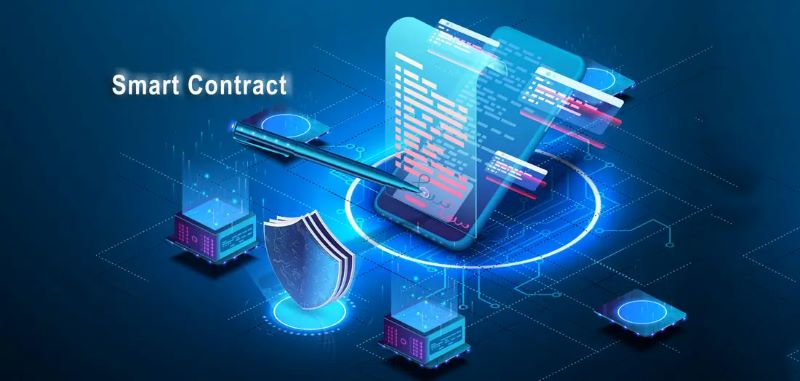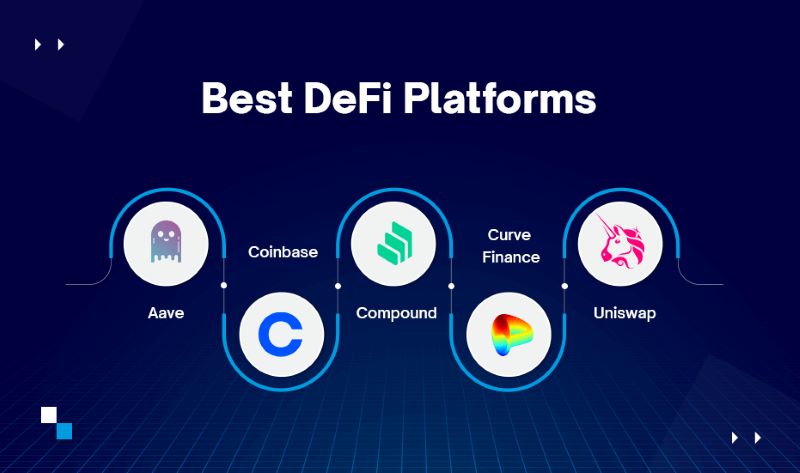Interoperable Blockchains: Unpacking Hidden Security Risks
Imagine a world where blockchains talk to each other, sharing data and value with ease. That’s the promise of interoperable networks. But with great innovation comes great security risks in interoperable blockchains. Yes, these chains can unlock new levels of synergy, yet they also open the door to complex attacks and unique challenges that can undercut the very trust they aim to build. In this deep dive, we’ll unravel these risks, spot the vulnerabilities of blockchain bridges, scrutinize smart contract integrity, and chart out the essential steps to safeguard these advanced networks. Get ready to fortify your knowledge as we tackle the security landscape of this cutting-edge tech together.
Understanding the Security Landscape of Interoperable Blockchains
The Complexities of Cross-Chain Attack Vectors
Cross-chain tech lets blockchains talk to each other. It’s new and exciting but not without risks. Hackers eye this tech, looking for cracks to sneak through. When we talk about risks in cross-chain setups, we often point to the cross-chain attack vectors. What are they? Simply, they’re paths or methods hackers might use to break in.
Attack vectors come in different shapes and sizes. They might exploit a smart contract or use bad data from oracles. Oracles bring in outside info blockchains can’t get alone. But this data can be messed with, causing chaos. With so many attack vectors, staying safe is tricky. We must keep watching and fixing these weak spots.
Recognizing Decentralized Security Challenges in a Multi-Chain Ecosystem
The world of many linked blockchains is like a busy city road. It works smoothly until it doesn’t. Here, we face decentralized security challenges. Multi-chain means more lanes, more traffic. Each lane is a blockchain. The risk? A traffic jam, or worse, a pile-up.
Hackers love complex systems. More lanes equal more chances for mischief. For example, in DeFi, money flows like water. But what if someone puts a hole in the pipeline? This is what we call systemic risk in DeFi. There’s a chance an entire system could crash from one weak spot.
Security isn’t just about strong locks. It’s also about building robust, thoughtful systems. No detail is too small. We must check each part, especially in a multi-chain ecosystem. Each chain could have its own rules, and a small slip could lead to big problems, like lost or stolen assets.
When we trade tokens, we could hit token standard discrepancies. It means one blockchain may not play nice with another. This causes transactions to fail or assets to get stuck. No one wants that. We also look at how blockchains agree, or their consensus algorithms. Weak agreements could let attackers change data or even take over a blockchain.
I dive deep into each of these areas. Every day, I look for new blockchain vulnerabilities. I audit smart contracts to spot slips before they turn into falls. I work with teams to teach them about these risks, so they can build safer blockchains. Each update, each fix, makes the whole system a bit stronger.
It’s like playing a game of high-tech whack-a-mole. We hit each problem fast and hard. We can’t let our guard down. Attackers won’t.
We must keep learning and adapting. As builders and keepers of this new tech, it’s on us to guard it. Not just for today’s users, but for everyone who will trust it tomorrow. The mission is clear. Secure each chain, protect every link, and keep the whole network safe.
Time flies, tech evolves, but the goal stays the same. A safe, strong, and trusted digital world. That’s the target I wake up aiming for every single day. And you bet, the work is never done. But, like a sturdy chain made of many links, if we each hold strong, the whole chain stays solid.
The Risks and Vulnerabilities of Blockchain Bridges
Exploring Blockchain Bridge Risks and Token Standard Discrepancies
Blocks talk to each other using chains. It’s like LEGO bridges, letting them share cool stuff. But sometimes, these bridges are not perfect. Cross-chain attack vectors may sneak in. These are like tiny bugs in the bridge, looking to cause trouble. Hackers love these bugs. They can steal or mess with the stuff that blocks are sharing.
Interoperability protocol weaknesses are like weak spots in the bridge. It could break under too much load or a tiny crack might grow. Smart contract exploits happen when someone finds a trick in the rules of the bridge. They might change the rules to let themselves double-share or even steal.
Now, token discrepancies are a bit tricky. Think of them like arcade tokens. If machines don’t accept each other’s tokens, you can’t play games. When two chains have different rules for their tokens, blocks can get confused. One might think it’s rich when it’s not.
We must keep an eye on these risks. They can cause big problems for everyone using the bridge, not just the big players. Checking the bridge, which means auditing smart contracts, is super important. This helps us find and fix cracks before they grow.
Trust Assumptions and Ledger Integrity Issues in Cross-Ledger Transactions
When we talk about trust in blockchains, we’re talking about believing the bridge will work as it should. But sometimes, this trust might be a leap too big. It’s like expecting someone to always catch you when you jump without looking.
Ledger integrity issues are all about keeping our block record clean and true. Imagine if someone glued pages in your journal. You wouldn’t know what’s real or made-up anymore. That’s why maintaining a rock-solid ledger is vital.
Now, cross-ledger transactions security sounds fancy. It’s just making sure that when stuff moves across the bridge, it stays safe. You wouldn’t want your toy disappearing in the middle of the bridge, right?
We have to think about DDoS attacks on blockchains. These are like a rush hour jam on our bridge, no one can move. Also, there are Sybil attacks in interoperability. That’s like sneaky clones trying to cross the bridge and trick us.
With all these risks, it’s a bit scary, right? But have no fear! By keeping our bridge in check, through constant updates and smart rules, we can keep our blocks – and their stuff – safe and secure. Remember to always double-check the bridge, just like you would look both ways before crossing a road. It keeps our block world running smooth and our toys, I mean tokens, safe.
Smart Contract Integrity and External Threats
Auditing Smart Contracts to Mitigate Exploits
Think of smart contracts like game rules. They guide a blockchain’s actions. But, like any set of rules, they may have issues. Say a rulebook was unclear. Players could misuse it, right? That’s why auditing smart contracts matters. It’s a deep check to fix problems before they go live.
We find sneaky bugs that way. Take the reentrancy attack — it’s like a player taking extra turns. Not good. Also, there’s the problem with what we say and how it runs. If a smart contract says “send money” but it doesn’t ask “to who?” you can bet that’s trouble. So we check every code line, making sure it’s tight and right.
Sharp eyes stop bad actors from slipping through. It’s not just “does it work?” It’s “can it break?” And trust me, this needs experts who speak computer code like it’s their mother tongue. Our goal? Zero surprises. Zero exploits. That’s how we play it safe.
Oracles and External Data Risks: The Achilles Heel of dApps
Now let’s chat about oracles. They link our blockchain world to real-world info. Weather, prices, scores — you name it. But, they’re also a weak spot. It’s like getting all your news from one pal. If they mess up, well, you’ve got the wrong scoop.
Picture a betting dApp. It relies on final scores from an oracle. But, if someone fixes the score out there, your dApp bets go haywire in here. That’s why we need to be super careful about where our data comes from and double-check it.
We also use things called “consensus techniques.” Fancy term, simple idea: It’s like asking a bunch of friends to make sure your one pal’s story checks out. More people, less risk. It’s how we make sure the truth in is the truth out.
So yeah, we lean on oracles, but we don’t give them all the power. Think of it as trust but verify. We keep those eyes open. Always. Because in blockchain, single points of failure aren’t an option. We smash those Achilles heels. We make dApps tough as nails.
Preventative Measures for Securing Interoperable Networks
Approaches to Enhance Consensus Algorithm Robustness
Let’s talk about keeping blockchains safe. First off, why should we care? Well, blockchains talk to each other more than ever. This chat between chains is called interoperability. Just like people, blockchains can sometimes get tricked. If one blockchain is fooled, lies can spread to others. That’s a big deal!
What can we do to stop this? Start with the consensus algorithm. That’s like a rulebook for blockchains to agree on what’s true. Some bad guys find ways to mess with the rules. To stop them, we need to get crafty.
First, mix up the validators. Imagine if only a few people could say what’s true. That’s risky. Let’s have lots of people take turns instead. This way, if one player tries to cheat, the others can call foul.
Second, watch for strange things. When a blockchain starts acting oddly, raise an alarm. This keeps everyone on their toes.
Now, let’s zoom in on the DeFi world—it’s like a playground for your digital dollars.
Identifying and Mitifying Systemic Risk in DeFi Platforms
Money is moving in cool new ways with DeFi. But, these new ways can be like wild rollercoasters. So, how do we make them safer?
Keep an eye on the money pools! These pools are like big pots where everyone’s money stews together. If someone pulls a fast one, like using fake money, it could spoil the whole pot.
Smart contracts are like the secret recipes for these money stews. We need smart people to check these recipes very carefully. This checking is called auditing. Picture a detective looking for clues in small print—that’s what it’s like. When they find something fishy, they fix it before trouble cooks up.
But, DeFi isn’t just about smart contracts. It’s tricky because it uses info from the outside world, like prices. If this info is wrong, things can go south fast. So, we need to make sure we’re getting truth, not tricks. We do this by double-checking the sources, like asking a few friends before believing a wild story.
Making chains work together safely is like a team sport. Every player must do their part to win. It’s about thinking ahead, watching each other’s backs, and fixing problems before they grow. By doing this, we can all score a safer blockchain world.
Remember, blockchains should be like a well-guarded treasure, not a leaky boat. We’ve got to keep patching up holes and making sure everyone plays by the rules. That’s how we keep our digital treasures safe in this exciting new land of blockchains talking to each other.
In this post, we dove deep into the world of blockchain security. We picked apart the nitty-gritty of how different chains link up and where they can get hit by bad actors. We also looked at the tricky parts of blockchain bridges and why it’s not so simple to keep everything safe when tokens move and rules vary.
Besides that, we talked about smart contracts. They’re super smart but not perfect. We need to keep an eye out for sneaky code that could mess things up, and remember that the info coming from outside the blockchain can trip us up, too.
Lastly, we learned it’s smart to get ahead of the game with strong defense moves. It’s like putting up a fortress around our blockchain cities. We can build tougher algorithms and watch DeFi like hawks to stop trouble before it starts.
I’ve shared solid tips, and you’ve got what you need to tackle security in this chain-linking tech. Stay sharp, plan smart, and let’s keep our blockchains safe.
Q&A :
What are the main security concerns with interoperability in blockchain systems?
Interoperability in blockchain technology refers to the capability of different blockchain systems to communicate and share information with one another. The main security concerns surrounding this feature include smart contract vulnerabilities, where one chain’s weakness can affect another; potential for increased attack surfaces due to connecting disparate systems; and the risk of cross-chain replay attacks, where a transaction on one blockchain could inadvertently be valid on another linked blockchain.
How can cross-chain transactions impact the security of interoperable blockchains?
Cross-chain transactions enable the exchange of assets and data between different blockchains, but they also introduce security risks. These transactions can be exploited by attackers to conduct double-spending attacks, where the same digital asset is spent more than once. Another significant risk is the threat of data consistency and integrity, where malicious actors may alter the information as it passes between blockchains.
Can interoperable blockchain solutions be safe from 51% attacks?
While interoperable blockchain solutions strive to enhance connectivity between different platforms, they are potentially vulnerable to 51% attacks. These attacks happen when a user or group controls more than half of the network’s mining hashrate or computational power, allowing them to disrupt the network. More interconnected blockchain systems could become targets for such attacks, as the security of one blockchain can affect another.
What protocol measures can enhance security in interoperable blockchains?
To ensure the security of interoperable blockchains, developers may employ several protocol measures. These include implementing robust consensus mechanisms that resist common attacks, employing threshold signatures for cross-chain transactions to reduce reliance on central validators, and creating secure cross-chain communication protocols like hashed timelock contracts (HTLCs) to eliminate the chances of fraudulent transactions.
Are there any industry standards for ensuring the security of interoperable blockchains?
While the field is still evolving, several initiatives and industry standards are under development to ensure the security of interoperable blockchains. Organizations like the InterWork Alliance and the World Wide Web Consortium (W3C) are working on universal standards. These standards include best practices for secure messaging, transaction verification, and cryptographic proofs to ensure that interactions between blockchains maintain the highest security levels.




RELATED POSTS
Who founded Bitcoin? Who is the owner of bitcoin?
Who founded Bitcoin is a...
Unlocking the Mystery: How Does Blockchain Work for Beginners?
How does blockchain work? Understanding...
Decentralized exchanges and tokenization: Tokenization’s Future Now
Discover the Essence of Decentralized...
Can Blockchain Scale? Unraveling the Truth Behind Cryptos Future
"Can Blockchain Scale? Understanding Scalability...
Stablecoins Demystified: Your Ultimate Guide to Digital Currency Stability
What are stablecoins? Understanding different...
Exploring DLT in Blockchain: Navigating the Tech of Tomorrow
Understanding the Fundamentals of DLT...
Unveiling the Future: Impact of quantum computing on blockchain
The Impact of quantum computing...
Layer 1 Blockchain Explained: Unveiling the Foundation of Crypto Security
What is a layer 1...
Decentralized Student Data Ownership: Can Blockchain Revolutionize Education?
"Empower students with blockchain: Decentralized...
Blockchain Adoption Unveiled: Are Industries Embracing the Change?
Is blockchain widely used? Explore...
Explanation of Proof of Work: How PoW Secures Blockchain Innovation
Explanation of Proof of Work...
Disruptive potential of blockchain technology: Shaping Future
Unlocking the disruptive potential of...
Hana Network Airdrop – Detailed Guide to Receiving Tokens
This detailed guide will help...
Mechanics Of Blockchain Technology: How It’s Transforming Tech
Learn the Mechanics of Blockchain...
Green Crypto Coins: Investing in a Sustainable Digital Future
Understanding the Future of Sustainable...
Unpacking Types Of Attacks On Blockchain Various
Types of attacks on blockchain...